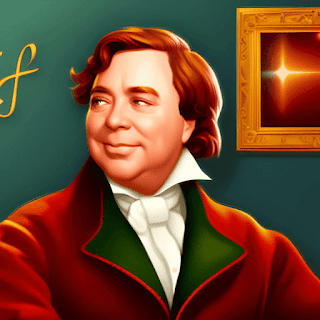From Revolution to Romance: A
Historical Journey Through the Romantic Period
The Roots of Romanticism:
Exploring the Historical Context of an Era
The Historical Context of the Romantic Period
The Romantic Period is known for its emphasis on
imagination, emotion, and individualism. It was a time of great artistic,
literary, and social revolution. However, the emergence of Romanticism did not
occur in a vacuum. It was shaped by the historical context of the time, which
included the Industrial Revolution, the French Revolution, and the
Enlightenment.
Introduction
The Romantic Period is generally considered to have lasted
from the late 18th century to the mid-19th century. It was an era of great change
and upheaval, characterized by the rise of industrialization and political
revolution. At the same time, the Enlightenment and Neoclassicism were dominant
cultural forces. The Romantic movement emerged as a reaction to these dominant
trends, and it embraced a more emotional and individualistic approach to art,
literature, and society.
The Enlightenment and Neoclassicism
The Enlightenment was a philosophical movement that began in
the 17th century and continued into the 18th century. It emphasized reason,
science, and progress, and it rejected superstition and tradition. This
movement had a profound impact on art and literature, as it led to the
development of Neoclassicism. Neoclassicism was an artistic and literary
movement that drew inspiration from the classical art and literature of ancient
Greece and Rome. It emphasized clarity, rationality, and order, and it rejected
the emotional excesses of the Baroque period.
The Industrial Revolution and its effects
The Industrial Revolution was a period of rapid
industrialization that began in the late 18th century and continued into the
19th century. It was marked by the development of new technologies, such as the
steam engine and the spinning jenny, which revolutionized the way goods were
produced. The Industrial Revolution had a profound impact on society, as it led
to the growth of urban centers and the rise of a new middle class.
The French Revolution and its Influence
The French Revolution was a period of political upheaval
that began in 1789 and lasted for a decade. It was characterized by the
overthrow of the monarchy, the establishment of a republic, and the Reign of
Terror. The French Revolution had a profound impact on European society, as it
inspired similar revolutions in other countries and led to the rise of Napoleon
Bonaparte.
The Rise of Romanticism
The Romantic movement emerged in the late 18th century as a
reaction to the dominant cultural trends of the time. Romanticism rejected the
rationality and order of Neoclassicism and the Enlightenment, and it embraced
the emotional and individualistic approach of the Baroque period. The Romantics
were interested in the natural world, the supernatural, and the inner world of
human emotion. They sought to express these themes in their art and literature,
and they valued creativity and originality above all else.
Imagination and Creativity
One of the key characteristics of the Romantic movement was
its emphasis on imagination and creativity. The Romantics believed that the
imagination was a powerful force that could inspire great works of art and
literature. They valued originality and creativity above all else, and they
sought to break free from the conventions of Neoclassicism and the
Enlightenment.
Emotion and Passion
Another important characteristic of Romanticism was its
emphasis on emotion and passion. The Romantics believed that the human heart
was the source of all great art and literature, and they sought to express a
wide range of emotions in their works. They were particularly interested in
intense emotions, such as love, despair, and ecstasy.
Individualism and Rebellion
Romanticism was also characterized by its emphasis on
individualism and rebellion. The Romantics believed that the individual was
more important than society, and they sought to express their own unique
perspectives in their works.
Literature of the Romantic Period
Characteristics of Romantic Literature: Romantic
literature is marked by its focus on the individual and his or her emotions and
experiences. It often emphasises the importance of nature, imagination and the
supernatural, and rejects the rationalism and scientific thinking of the
Enlightenment. Romantic writers often celebrated the common people and their
everyday experiences, and wrote about the power of the imagination to create
new worlds and possibilities.
Major Romantic Writers: The Romantic Period produced
some of the most celebrated and influential writers in the history of English
literature. William Wordsworth, Samuel Taylor Coleridge, Percy Bysshe Shelley,
John Keats, Lord Byron, and Mary Shelley are among the most notable.
Major Works of Romantic Literature: The Romantic
Period produced a wealth of important and influential works of literature. Some
of the most notable include Wordsworth's "Lyrical Ballads,"
Coleridge's "The Rime of the Ancient Mariner," Shelley's "Ode to
the West Wind," Keats' "Ode to a Nightingale," Byron's "Don
Juan," and Mary Shelley's "Frankenstein."
Conclusion
The Romantic Period
was a time of great change and upheaval in European history. It was marked by a
growing awareness of individual rights and freedoms, and a rejection of the
rigid structures and values of the past. The Industrial Revolution, French
Revolution, Enlightenment, and Neoclassicism all played a role in shaping the
cultural and intellectual landscape of the period. Romantic literature, with
its focus on the individual and his or her emotions and experiences, reflected
and helped to shape the cultural and intellectual trends of the time.
FAQs
Q: What was the main goal of the Romantic movement? A: The
main goal of the Romantic movement was to create a new and more authentic form
of art and literature that reflected the experiences and emotions of the
individual.
Q: What were the key characteristics of Romantic literature?
A: Romantic literature emphasized the importance of nature, imagination, and
the supernatural, and rejected the rationalism and scientific thinking of the
Enlightenment. It also celebrated the common people and their everyday
experiences.
Q: Who were some of the major writers of the Romantic
Period? A: William Wordsworth, Samuel Taylor Coleridge, Percy Bysshe Shelley,
John Keats, Lord Byron, and Mary Shelley are among the most notable.
Q: What were some of the major works of Romantic literature?
A: "Lyrical Ballads" by William Wordsworth and Samuel Taylor Coleridge,
"The Rime of the Ancient Mariner" by Samuel Taylor Coleridge,
"Ode to the West Wind" by Percy Bysshe Shelley, "Ode to a
Nightingale" by John Keats, "Don Juan" by Lord Byron, and
"Frankenstein" by Mary Shelley are some of the most notable works of
Romantic literature.
Q: How did the Industrial Revolution and French Revolution
impact the Romantic Period? A: The Industrial Revolution and French Revolution
led to significant social and economic changes in Europe during the Romantic
Period, and helped to shape the cultural and intellectual landscape of the
time. They also contributed to the growing emphasis on individualism and the
rejection of traditional values and structures that characterized the Romantic
movement.

